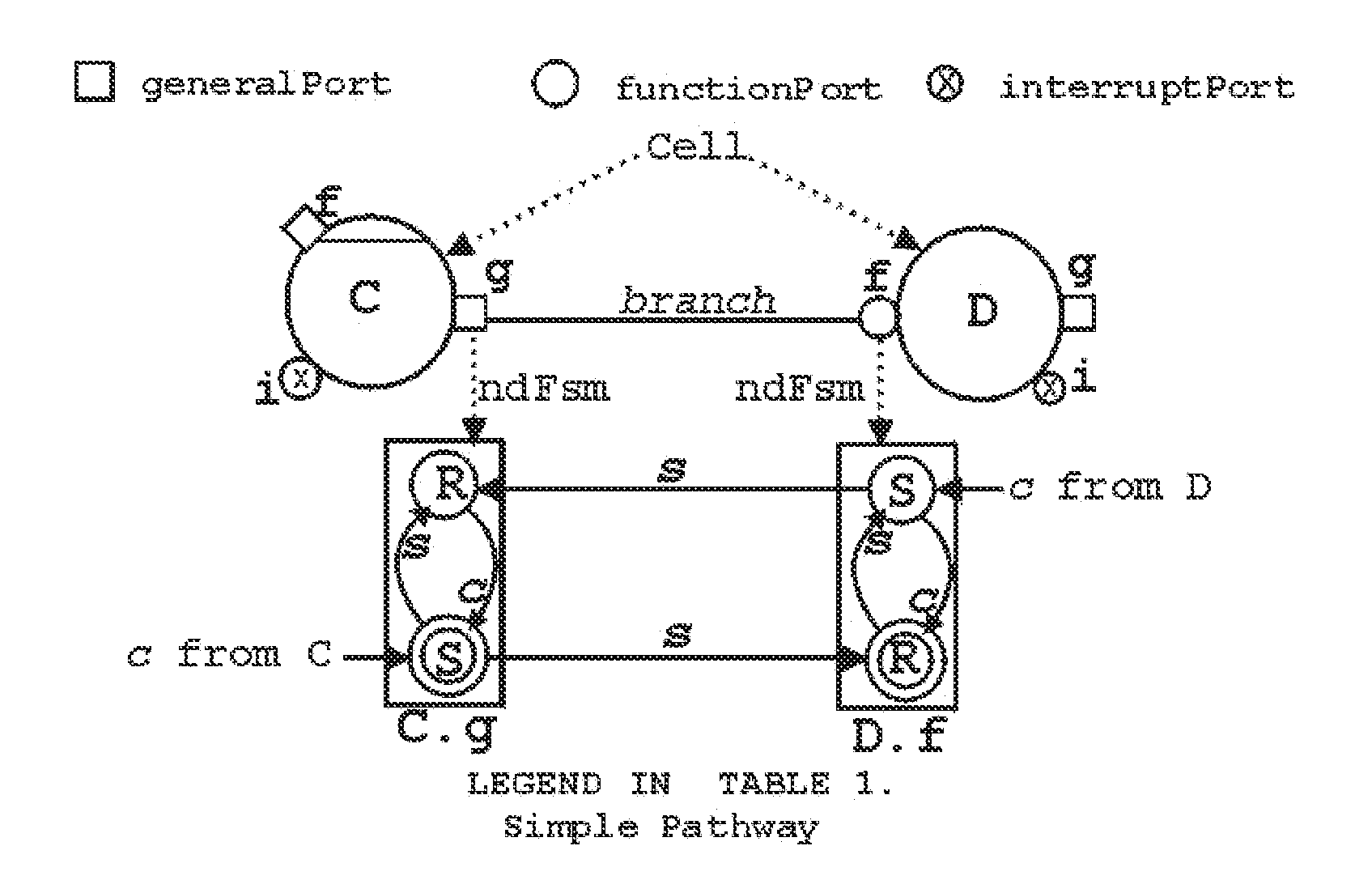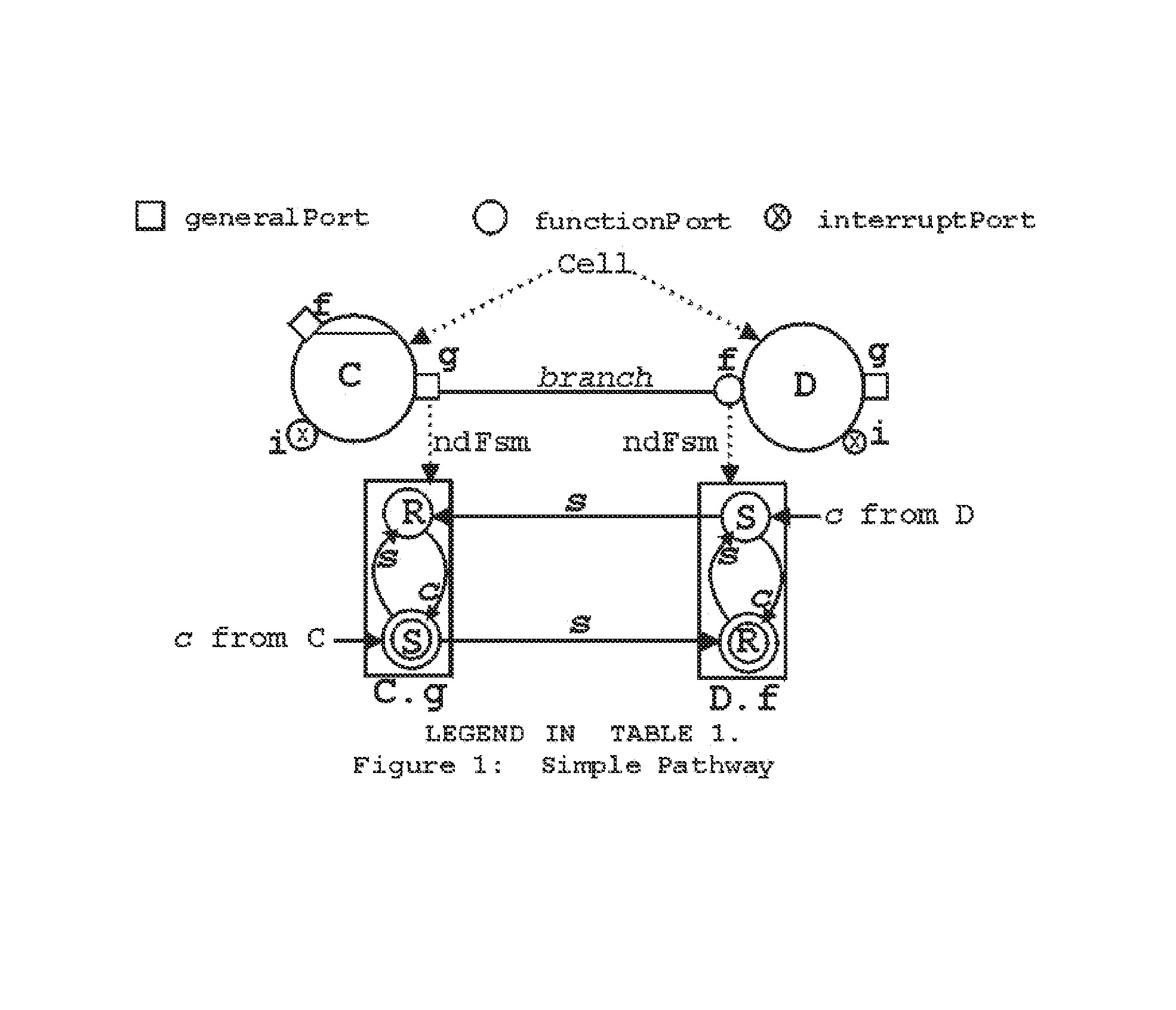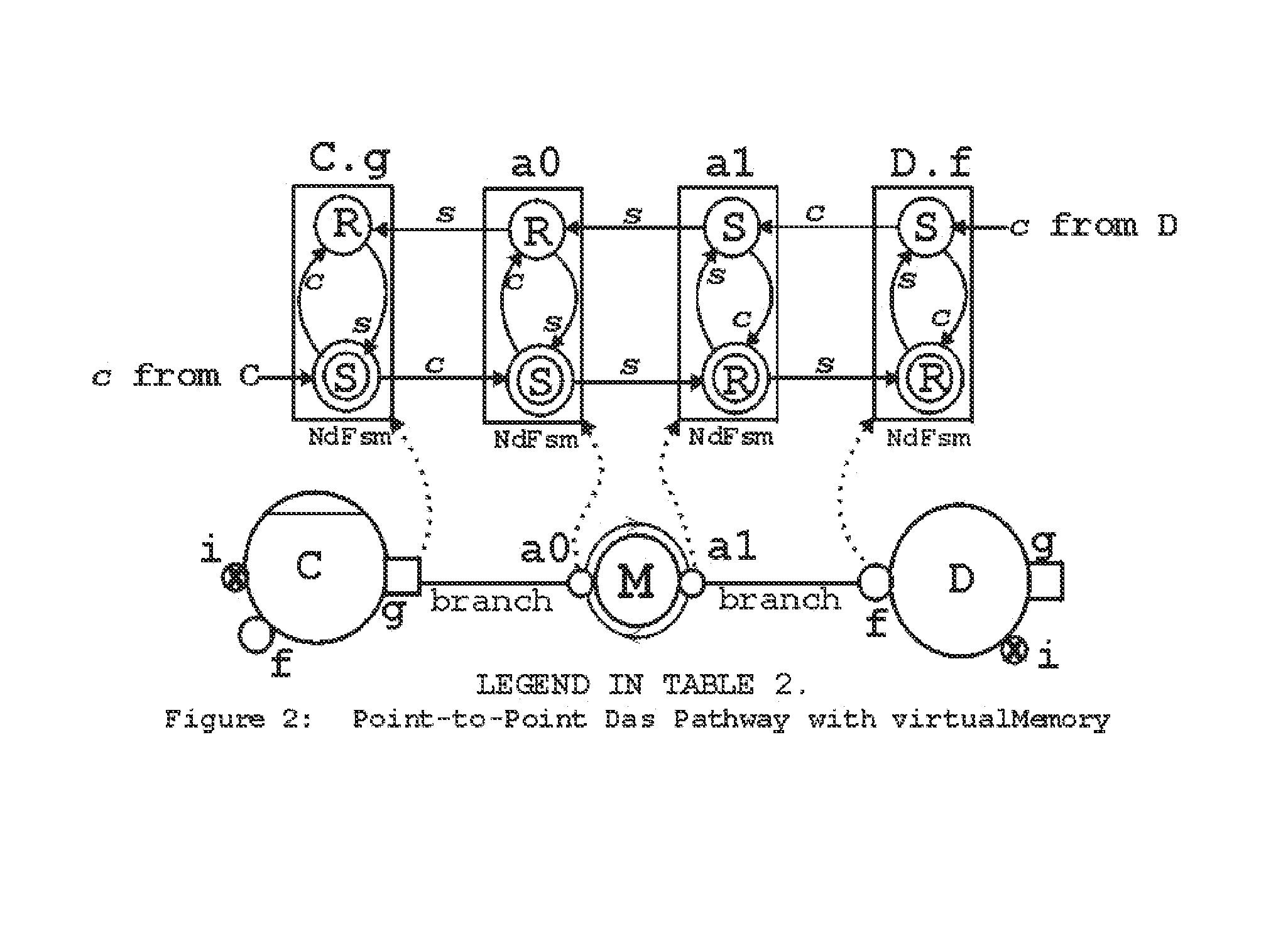TICC-paradigm to build formally verified parallel software for multi-core chips
a parallel software and chip technology, applied in the direction of multi-programming arrangements, program control, instruments, etc., can solve the problems of inability to guarantee data privacy and system security, inability to produce software systems that exploit available hardware configurations, and intrinsic error prone software systems
- Summary
- Abstract
- Description
- Claims
- Application Information
AI Technical Summary
Benefits of technology
Problems solved by technology
Method used
Image
Examples
Embodiment Construction
™-PARADIGM TO BUILD FORMALLY VERIFIED SOFTWARE FOR MULTICORE CHIPS
Basic Concepts and Illustrative Examples
[0098]1. Introduction
[0099]TICC™ message passing paradigm and TICC™-Ppde adapts and integrates aspects of seven other programming paradigms: (i) the OO (Object Oriented) paradigm [1,2,3,4], (ii) parallel computations as in Actors [5,6,37], (iii) interaction specifications as in π-calculus [7,8,9] (iv) integration of computation and communication as in CSP [10,11,12], (v) verification of implementations similar to design verification through FSPs (Finite State Processes) [13], (vi) verification of NFSP (non-FSP) systems similar to [15] and [16.17,18], and (vii) communication using RESTCLK-pathways [19]. Only the OO-paradigm is used practically unchanged. Among the rest, RESTCLK, TICC™ and proof methods are new.
[0100]Integration of these paradigms is made possible by the use of TICC™, which enables hardware and software computing components to exchange signals programmatically. Al...
PUM
 Login to View More
Login to View More Abstract
Description
Claims
Application Information
 Login to View More
Login to View More - R&D
- Intellectual Property
- Life Sciences
- Materials
- Tech Scout
- Unparalleled Data Quality
- Higher Quality Content
- 60% Fewer Hallucinations
Browse by: Latest US Patents, China's latest patents, Technical Efficacy Thesaurus, Application Domain, Technology Topic, Popular Technical Reports.
© 2025 PatSnap. All rights reserved.Legal|Privacy policy|Modern Slavery Act Transparency Statement|Sitemap|About US| Contact US: help@patsnap.com



